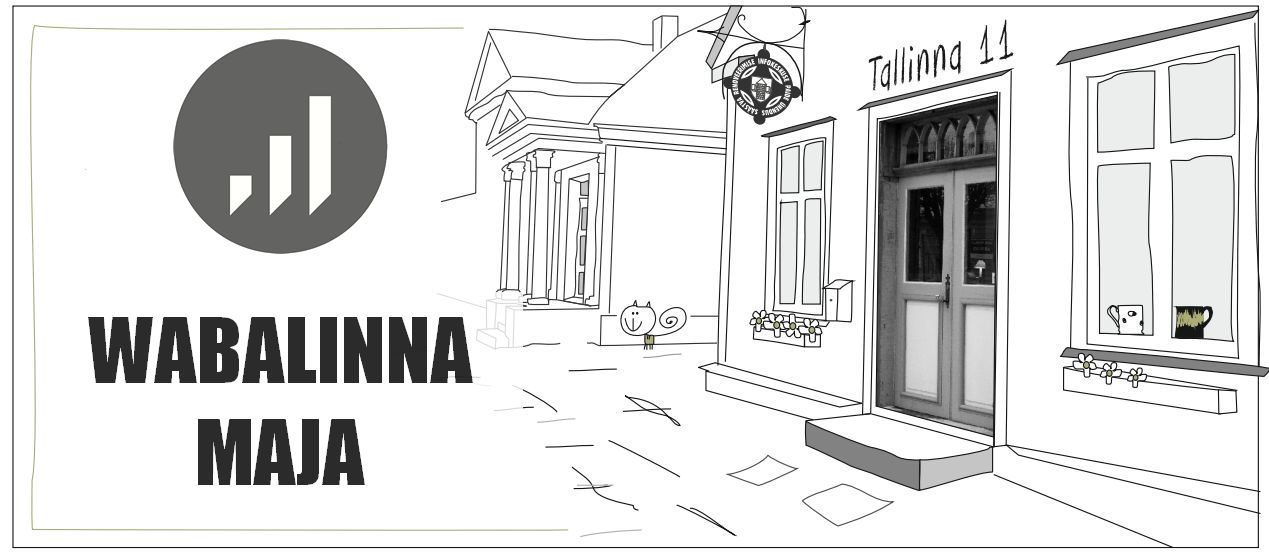In year 2013 we did quite many different things in Paide Community Centre. We participated in several projects helping to renovate Tallinna 11 house, trained and educated others and ourselves, and organized other events. We also thought thoroughly about our communication activities and as a result of this we now have a new conception for our house
A complete summary of the year can be found in Estonian language at Weissenstein blog post 2013. aasta. Below a short summary of the summary.
In January we hosted a meeting of Estonian Information Centres for Sustainable Renovation in Paide SRIK and started the FarmFoodClub (Talutoiduklubi in Estonian). In February and March we organized some workshops on paper plaster, sawdust plaster and egg tempera.
In March we had second Freetown Congress (Wabalinna kongress in Estonian), finished with project Annetuskeskkond and started several new projects for organizing workshops and events, drafting our communication plan and a new conception for Tallinna 11 house, and renovating our house.
In March we participated in project Terres à Terres transnational meeting in Italy and in May hosted one in Paide and Mooste (see agenda, presentations and photos). In April we hosted Year of Cultural Heritage event in Paide and had first ten-days workshop on sustainable renovation in the Centre of Volunteers in Järva county (Järvamaa Vabatahtlike Keskus in Estonian).
In May we watched together TEDxTallinn 2013 livestream, organized the yearly "Let's do it" day of civil actions in the Community Centre (Kogukonnakeskus in Estonian), opened the wood workshop in Paide SRIK for communal use, got funding for renovating our kitchen for organizing food workshops with FarmFoodClub, hosted a reception of National Heritage Board information day and advised some nice people from Haapsalu to start there another Information Centre for Sustainable Renovation (shortly SRIK in Estonian).
In June we were busy with renovating the Tallinna 11 house and preparing for next events. In July we had another ten-days workshop on renovating old houses. In middle of July we opened a graphics exhibition and had a lecture/talk about "Soviet flower-power" in Walge Gallery, and participated in organizing the Kreisilinnapäev.
In August we were still renovating our house and also helped the organizers of Arvamusfestival. In September we had a FarmFoodClub workshop about natural canning, organized another annual festival Kolmkõla, attended the EcoMess festival in Tallinn, and organized another annual Old Town Conference (Vanalinna konverents in Estonian).
Before the local elections we had four Citizens' Clubs (Kodanike Klubi in Estonian) in September and October. Since September until December we had Mentoring Club in the Community Center. In the end of September we started another ten-days workshop on restoration of old doors and windows. In October we started teaching sustainable renovation in Koeru School and went to the first meeting of PLANT project in Ireland.
In November we had an Indian music concert in Walge Gallery, meeting of the members of Estonian Society of EcoBuilding (Ökoehituse Ühing in Estonian) in Community Center, and another ten-days workshop in the Centre of Volunteers. In the end of November we started FreeCinema (Wabakino in Estonian) in cooperation with Cinema Bus, and organized Freetown House Day (Wabalinna maja päev in Estonian) to present the new "face" of the community center.
In December we had FarmFoodClub christmas sale and wax candle workshop. agreed on sustainable renovation curriculum starting in Türi School in 2014 and had our end of year party.
Besides all this there were the permanent activities in SRIK through the year (counseling house owners, gathering old materials, sustainable renovation shop), permanent work with volunteers, publication of our newspaper KoosOlek, operation of Welopark, and launching the free cafe (wabakohvik in Estonian).
We thank all helpers and supporters (NFCS, OEF), including specially Paide Town Government that in our opinion could be a trendsetter for all Estonian local governments in supporting local activities and activists.
The era of the Community Center ended with year 2013.
Welcome to the Freetown House in 2014!












